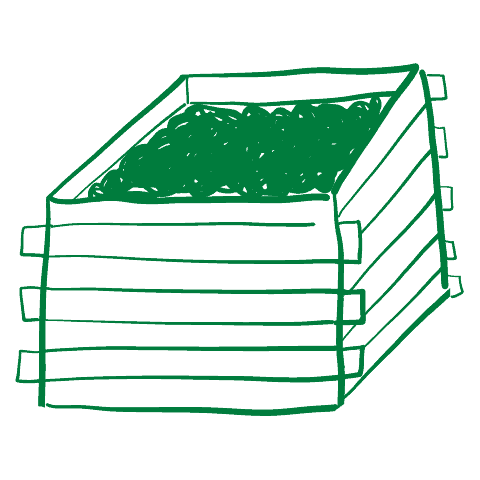
HEALTHY SOIL
ACTIVITY
MATERIALS
This workshop will use a variety of materials depending on the grade level. Check the workshops per grade to explore the activity and its required materials in depth.
RESOURCES
Check out the workshops by grade at the bottom of the page to get instant access to the full activity
SUMMARY
In this workshop, students work in groups to explore the soil. They learn to distinguish what makes healthy soil and get to identify whether it is healthy or not. They get to understand why having healthy soil is so essential and how to keep it that way.
For further soil and composting activities, check out the Garlic Workshop in our Workshop Section.
VIDEO (Coming soon – Stay tuned)
CURRICULUM OBJECTIVES
Grade 3
Science and Technology: Understanding Earth and Space Systems
Overall Expectations
▪ Assess the impact of soils on society and the environment, and of society and the environment on soils
▪ Investigate the composition and characteristics of different soils
▪ Demonstrate an understanding of the composition of soils, the types of soils, and the relationship between soils and other living things
Specific Expectations
▪ 1.2 – Assess the impact of human action on soils, and suggest ways in which humans can affect soils positively and/or lessen or prevent harmful effects on soils
▪ 2.2 – Investigate the components of soil, the condition of soil, and additives found in soil, using a variety of soil samples from different local environments, and explain how the different amounts of these components in a soil sample determine how the soil can be used
▪ 3.1 – Identify and describe the different types of soils
▪ 3.2 – Identify additives that might be in soil but that cannot always be seen
▪ 3.4 – Describe ways in which the components of various soils enable the soil to provide shelter/homes and/or nutrients for different kinds of living things
Grade 4
Specific Expectations
▪ Follow established safety procedures for working with soils and natural materials
Grade 5-6
Overall Expectations
▪ Analyse the immediate and long-term effects of energy and resource use on society and the
environment, and evaluate options for conserving energy and resources
Specific Expectations
▪ Analyse the long-term impacts on society and the environment of human uses of energy
and natural resources, and suggest ways to reduce these impacts
▪ Describe chemical changes in matter as changes that are irreversible
Grade 7
Overall Expectations
▪ Assess the impacts of human activities and technologies on the environment, and evaluate ways of controlling these impacts
▪ Investigate interactions within the environment, and identify factors that affect the balance
between different components of an ecosystem
Specific Expectations
▪ Design and construct a model ecosystem and use it to investigate interactions between the biotic and abiotic components in an ecosystem
▪ Demonstrate an understanding of an ecosystem as a system of interactions between living organisms and their environment
▪ Identify biotic and abiotic elements in an ecosystem, and describe the interactions between them
▪ Describe the roles and interactions of producers, consumers, and decomposers within an ecosystem
▪ Describe how matter is cycled within the environment and explain how it promotes sustainability
Grade 8
Overall Expectations
▪ Assess the personal, social, and/or environmental impacts of a system, and evaluate improvements to a system and/or alternative ways of meeting the same needs
▪ Investigate a working system and the ways in which components of the system contribute to its desired function
Grade 3
Specific Expectations
▪ Divide whole objects and sets of objects into equal parts, and identify the parts using fractional
names
Grade 4
Specific Expectations
▪ Compare and order fractions (i.e., halves, thirds, fourths, fifths, tenths) by considering the size
and the number of fractional parts
▪ Demonstrate and explain the relationship between equivalent fractions, using concrete
materials (e.g., fraction circles, fraction strips, pattern blocks) and drawings
▪ Represent fractions using concrete materials, words, and standard fractional notation

